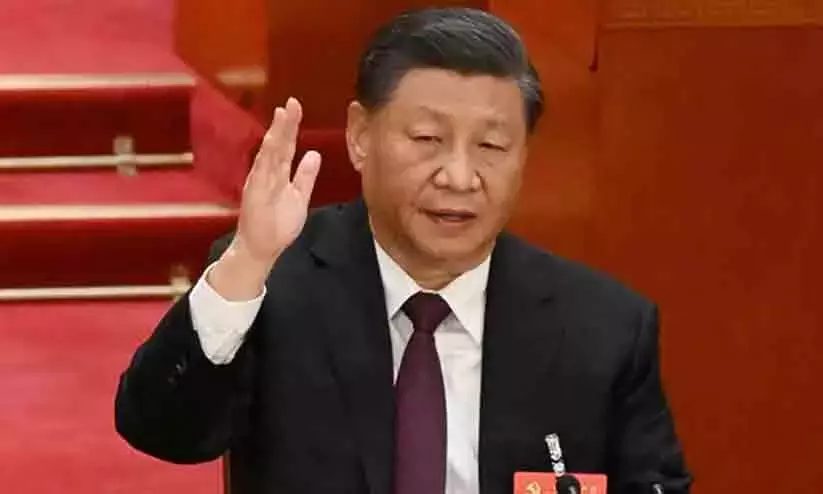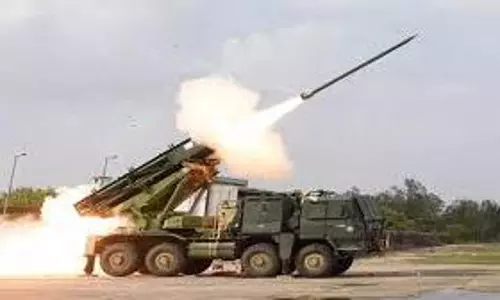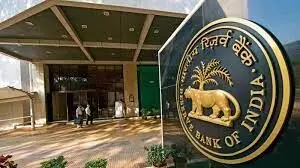
India needs 7.6% GDP growth for 25 years to become developed: RBI
text_fieldsMumbai: It takes an average annual real GDP growth of 7.6 per cent over the next 25 years in order for India to become a developed nation by 2047, The Reserve Bank said in an article.
The task, however, may not be easy, given the current level of capital stocks, infrastructure and skill sets of the people, said the article titled 'India @ 100'.
Addressing the nation on August 15, 2022 -- the 75th year of India's independence -- Prime Minister Narendra Modi laid down a vision for the next 25 years to become a developed nation by 2047.
"India's real GDP needs to grow at 7.6 per cent annually over the next 25 years to achieve the per capita income level to become a developed economy," the article, authored by Harendra Behera, Dhanya V, Kunal Priyadarshi and Sapna Goel, said.
The authors are from the RBI's Department of Economic and Policy Research.
The central bank said the views expressed in the article are those of the authors and do not represent its views.
During 2022-23, India recorded a growth of 7.2 per cent. The RBI's projection for GDP growth for the current fiscal year is 6.5 per cent.
The article, the authors said, provides an indicative road map for enabling India to become a developed country by 2047-48.
"India must rebalance its economic structure by strengthening its industrial sector so that its share in GDP rises from the current level of 25.6 per cent to 35 per cent by 2047-48.
"Agriculture and services activity would have to grow at 4.9 per cent and 13 per cent per annum, respectively, in the coming 25 years with their sectoral shares in GDP at 5 per cent and 60 per cent, respectively, in 2047-48," the article said.
It also said that to become a developed country by 2047, India's per capita GDP needs to rise by 8.8 times from the current level. In other words, the current per capita GDP of USD 2,500 needs to rise to to USD 22,000.
"This article explores the potential drivers of growth over the next 25 years and the challenges that may crop up necessitating timely and targeted policy responses to tackle them effectively," it said.
Further, the article said the sustainable path to development requires investment in physical capital and comprehensive reforms across sectors covering education, infrastructure, healthcare and technology to raise productivity.
Collaboration between the government, private sector, civil society and citizens is essential for driving this transformation.
No unique criterion is used to define a country as a 'developed' one. The World Bank classifies countries as low-income, lower-middle-income, upper-middle income and high-income based on Per Capita Income (PCI).
As per World Bank classification, a country with a per capita income of USD 13,205 or more in 2022-23 is classified as a high-income country.
The International Monetary Fund (IMF) classifies countries into two major groups: Advanced Economies (AEs) and Emerging Market and Developing Economies (EMDEs). This is based on three criteria -- per capita gross domestic product, export diversification and global financial integration.
According to the article, achieving high growth over a long time is not a rarity in economic history and that episodes of sustained high growth phases are more recent and highlight the importance of technology and globalised markets in sustaining high growth.
"It may be stated that India must surpass its preceding record to achieve the nominal per capita GDP of 9.1 per cent growth target," it said.
On the challenges, the authors said India's path to a developed nation by 2047 would crucially depend on developing both physical and human capital.
"India could become a developed country by 2047 with an average annual real GDP growth of 7.6 per cent sustained over the next 25 years," the article said.
Analysis presented in the article shows it is feasible that India could become a developed country by 2047, powered by the growth augmenting impact of policy focus on structural reforms, investments, logistics and digitalisation of the economy, upskilling the labour force, and sectoral policy initiatives covering manufacturing, exports, tourism, education, and health.
India needs to follow a multi-pronged approach for engaging the large pool of labour force productively and harnessing growth opportunities in knowledge-oriented sectors, it added.
PTI with superficial edits























